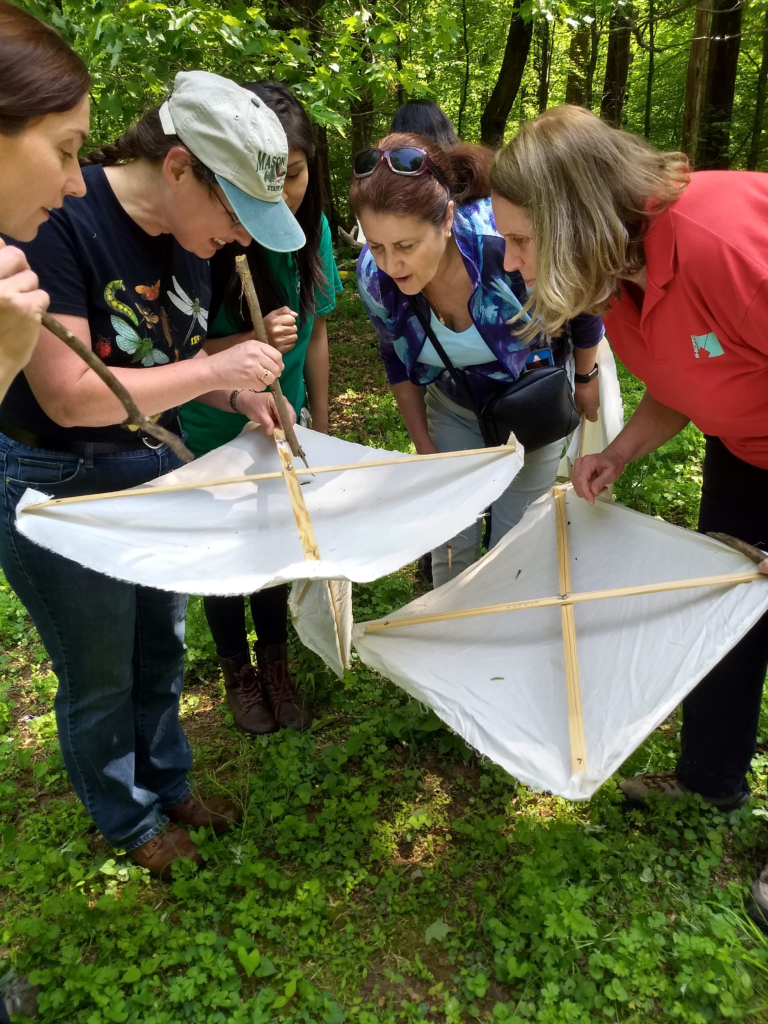From big to small, we all count. Even caterpillars.
Caterpillars are important
Caterpillars are familiar to us. When a butterfly flutters past you, you know that it was once a caterpillar. Now it’s time to count the caterpillars and arthropods (creatures, like insects, with segmented bodies) that you see to help scientists understand how their populations are changing. You can get started today with the Caterpillars Count! project. Even though this project doesn’t just focus on caterpillars, who can resist a good alliteration?
In 2015, Dr. Allen Hurlbert of North Carolina State University realized that, in a busy world, we tend to forget about the little things (like caterpillars and other arthropods). However, they’re very important: these little creatures keep our environment functioning, eating specific plants and serving as tasty snacks for other animals. Without them, everything is out of balance.
As important as they are to our world, we know very little about caterpillars and arthropods. Dr.Hurlbert needs your help getting data to answer questions like:
- “Where are caterpillars and other arthropods most abundant?”
- “Does their abundance and distribution change over the growing season?”
- “How do caterpillars affect other species such as migratory birds?”
Citizen scientists are the answer
From the very beginning of this project, “It was clear that citizen scientists were going to be needed to help to answer all of these questions,” said Caterpillars Count! coordinator Sarah Yelton.
RELATED: LIFE CYCLE OF A PIPEVINE SWALLOWTAIL BUTTERFLY
Anyone can help and get involved by participating in a survey (going outside and noting how many caterpillars and arthropods you see). You can either go to a pre-approved site or to set up a site of your own. Most study sites will need to have at least 25 tree or shrub branches and to be monitored on at least 10 different dates. You can explore and compare different sites online.
After that, you head out once a week and note all the caterpillars and arthropods you see. Nervous about identifying what you see? Online games from the Caterpillars Count! website can help you practice good survey and identification techniques.

Big plans for data about tiny creatures
While this project is still in its early stages, there are already big plans for the data. Since it started, Caterpillars Count! has already received 15, 471 surveys from citizen scientists who have documented 35,435 arthropods (2,814 or which were caterpillars). These surveys have been submitted from 55 different sites around the U.S., and 698 citizen scientists have collected data.. In the future, the leaders of Caterpillars Count! hope to tie their data to other species data sets such as birds and butterflies. “There’s a gap in knowledge about how the resources birds depend on are responding to climate change, and Caterpillars Count! can address that gap,” said Dr. Hurlbert.
As important as they are to our world, we know very little about caterpillars and arthropods.
We need you
Caterpillars Count! wouldn’t exist without the help of ordinary people who are willing to collect data, and they’re grateful for you. According to Yelton, the team is “always looking for new and creative ways to get people involved.” What are you waiting for? Start counting today!
Want more citizen science? Check out other articles on the Citizen Science Connected blog. Author Molly Schools also wrote an article about Project Martin Roost.
Featured image: A Tortricid Leafroller Moth Caterpillar at Oregon Ridge Nature Center, courtesy of Caterpillars Count!
About the Author: Molly Schools

Molly Schools is a graduate student pursuing her PhD at Temple University in Philadelphia. Her research studies the genetics, evolution and ecology of a group of lizards in the Caribbean. Many species in the Caribbean are threatened by habitat loss and her research will allow for more informed conservation efforts targeting these lizards and other similar species. In her limited free time Molly enjoys any activity that will get her outside such as hiking, kayaking and camping.




